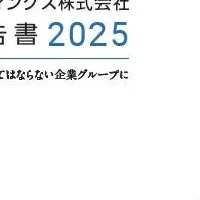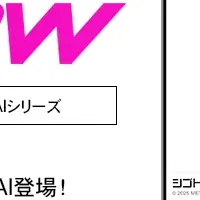
The FAIR Institute's 2025 Cyber Risk Management Report: A New Era in Risk Oversight
The 2025 Cyber Risk Management Report by the FAIR Institute
On June 26, 2025, the FAIR Institute unveiled its much-anticipated 2025 State of Cyber Risk Management Report. As organizations across the globe grapple with the evolving landscape of digital threats, the report showcases a crucial transition in how cyber risk management (CRM) is approached by leading firms.
A Shift in Perspective
Fueled by insights from 402 cyber risk leaders worldwide, the report underscores a significant evolution in the perception of CRM—once thought of primarily as a compliance-driven task, it has now matured into a strategic discipline. This transformation has been largely attributed to increased stakeholder engagement and a recognition of the value that effective risk management can bring to business outcomes.
John Sapp, the CISO at Texas Mutual Insurance Company and a member of the FAIR Institute Board, shared his insights: "The way we manage cybersecurity and technology risk is increasingly quantified, data-driven, and aligned to business outcomes and value." Such statements reflect a fundamental change in mindset, where risk management is no longer simply about adhering to regulations, but rather about generating risk-weighted returns and enhancing overall business resilience.
Key Findings
The report’s findings reveal several critical insights:
- - CRM Copntinues to Drive Business Outcomes: Organizations that demonstrate high maturity in CRM practices report enhanced credibility, improved alignment with business objectives, and a measurable reduction in risk. This proactive approach to cybersecurity ensures that organizations are not just reactive to threats but also anticipating and mitigating potential risks effectively.
- - C-Suite Engagement: Chief Technology Officers (CTOs), Chief Information Officers (CIOs), Chief Information Security Officers (CISOs), and Chief Risk Officers are increasingly regarded as primary users of cyber risk information. They integrate these insights into strategic decision-making and resource allocation, tailoring their investments to mitigate risks that directly impact their organizations.
- - Adoption of Quantification Models: There's a notable trend towards the adoption of financially driven risk analysis, with nearly half of respondents deploying the Factor Analysis of Information Risk (FAIR) model. This widespread commitment to quantification signifies a maturation of the CRM discipline, moving towards a more analytical, data-centric approach.
- - Emerging Technologies: Automation and Artificial Intelligence (AI) are becoming foundational elements in CRM. Results indicate that 70% of leaders have automated their CRM processes, and almost 50% utilize AI to enhance their programming and bolster risk management efficacy.
- - Growing Demand for CRM: There's an increasing internal appetite for effective CRM strategies, especially among organizations demonstrating high maturity levels. A significant portion reports that demand for these solutions is expected to rise substantially.
- - Board Expectations vs. Engagement: While nearly all organizations have established risk appetites and tolerance levels approved by their boards, many report that boards engage with cyber risk information in less than half of the surveyed entities. This disconnect indicates a potential area for improvement in executive oversight and involvement in cyber risk discussions.
The Role of Quantitative Risk Management
Yvette Kanouff, a public company board member, noted, "It's encouraging to see that boards are consistently defining risk appetite to guide cyber risk teams." As risk quantification practices become more sophisticated, there’s an expectation that CIOs and CISOs will use quantitative data in regular board discussions.
Michael Walters, CISO for Washington State University, also shared his experience in utilizing FAIR to quantify risks. He noted that articulating risks in dollar values enabled business partners to view cyber risks as integral to business strategy rather than mere technical issues.
Conclusion
The report from the FAIR Institute outlines best practices and prevalent challenges that organizations face as they integrate CRM into their operational frameworks. From addressing resistance to governance gaps, the findings emphasize the importance of sophisticated risk management in navigating the complexities of the digital era.
The complete report is now accessible at fairinstitute.org/state-of-crm-2025. Through collaborative insights and data-driven recommendations, the FAIR Institute continues to establish itself as a leader in advancing the discipline of cyber risk quantification.
About the FAIR Institute
The FAIR Institute is a not-for-profit organization dedicated to enhancing the discipline of measuring and managing cyber and operational risk. With a growing community of over 17,000 members, it serves as a reference point for best practices in cybersecurity and risk management.
About GuidePoint Security
GuidePoint Security provides a wealth of cybersecurity solutions and services aimed at empowering organizations to optimize their security postures effectively. Trusted by numerous Fortune 500 companies, GuidePoint is a cornerstone of modern cybersecurity strategy.
About SAFE
SAFE is revolutionizing the field of cyber risk management with its Agentic AI platform, enabling organizations to accurately quantify and manage their cyber risks efficiently.
For press inquiries, reach out to Todd Tucker, Managing Director at FAIR Institute.
- ---
Topics Business Technology)










【About Using Articles】
You can freely use the title and article content by linking to the page where the article is posted.
※ Images cannot be used.
【About Links】
Links are free to use.